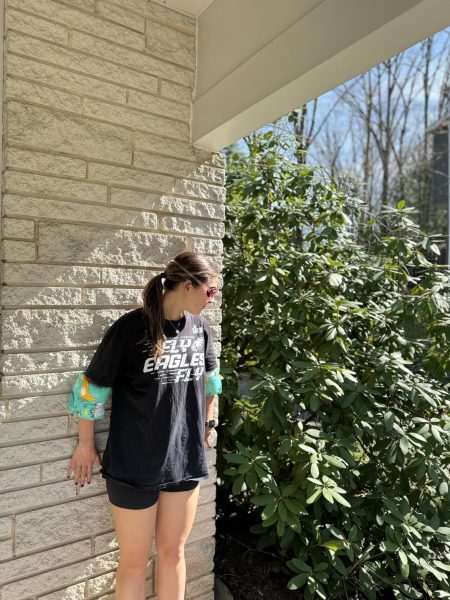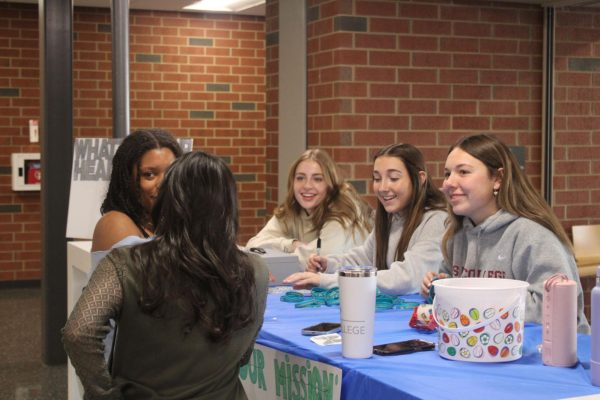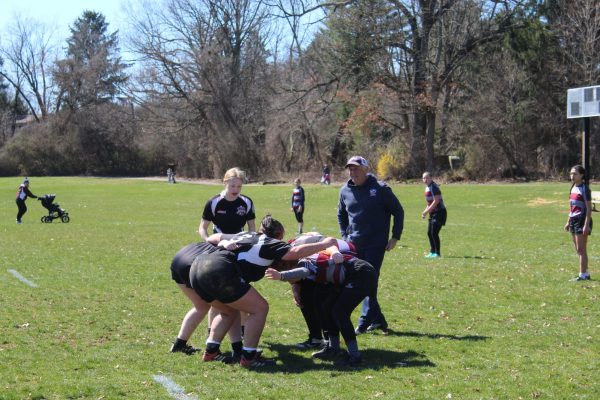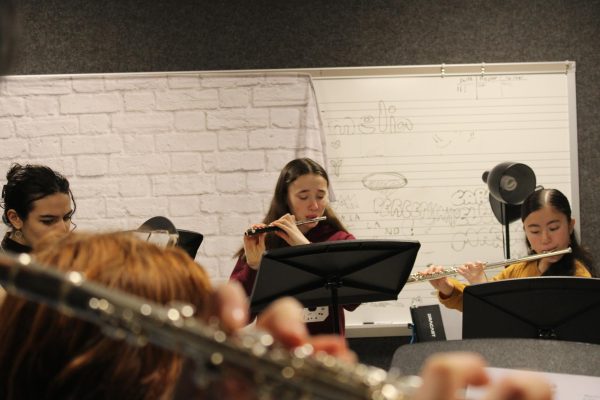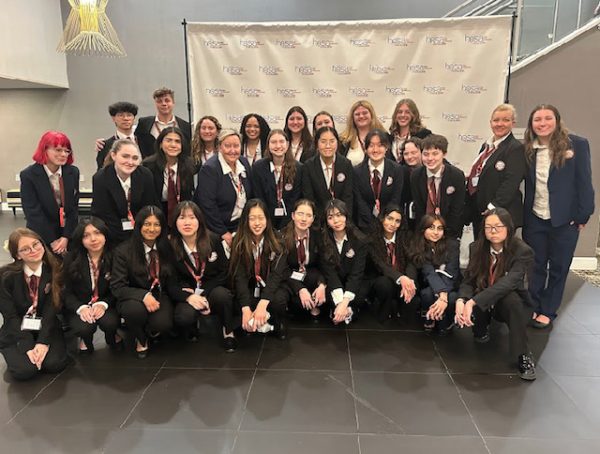Winter Holidays Celebrated: Traditions and Their Histories
Decorative Window Display, Picture taken by Enkhmaa Bilegee.
January 26, 2023
Winter break is over. It’s time to pack up your ornaments and put down the menorah. No more hot chocolate or homemade cookies. It’s a new year and now that your list of New Year’s resolutions is waiting to be completed, let’s instead talk about the winter holidays that State High students celebrated to distract yourself from the fact that school is back in session now.
Hanukkah is a Jewish holiday that is celebrated for eight nights in either late November or late December. Ellie Kauffman, a State High sophomore, celebrated Hanukkah this winter. “We have the menorah– it’s technically called a hanukkiyah. It is a candle holder with eight different branches,” Kauffman stated, “Each night, you light a new candle.”
The history of Hanukkah came from the story of the menorah, which burned for eight nights despite only having enough oil to last a single day, in the Second Temple of Jerusalem which had been rededicated to God after the Maccabean Revolt where the Israelites rose against the Greek-Syrian oppression.
“We also eat oily foods,” said Kauffman. “We eat jelly donuts–but in Hebrew, we call them Sufganiyot–and latkes such as potato pancakes.” Fried treats are recommended on a holiday focusing on oil. There are also gelts or chocolate coins that are given to children as presents which happen to also be used for a traditional game, dreidel, that is played on Hanukkah.
Dreidel is a four-sided spinning top with a Hebrew letter on each side. The letters together stand for “Nes gadol haya sham” meaning, “A great miracle happened there.” Gelts are used as money and depending on the letter you land, you either gain or lose coins. The dreidel imitated a gambling toy, teetotum, which dates back to ancient Greek and Roman times but it was first made as a way for Jewish children to illegally study their religion without getting caught.
In the end, the most amazing part of Hanukkah is the people who continue to treasure and acknowledge their culture.
The Islamic holiday, Ramadan, is actually not a winter holiday at all. Instead, Ramadan is the ninth month of the Islamic calendar, which is different from today’s standard calendar, meaning that every year, Ramadan move to be celebrated at different times. So Ramadan sometimes is celebrated in winter and other times, in summer.
The holiday is a time when Muslims all around the world fast, pray, and self-reflect. Freshman Dalia Eldawody, who celebrates Ramadan, said, “[Ramadan] is basically just that you fast every day for a certain amount of time from sunrise to sunset.” Those who are practicing fasting would wake up early in the morning to eat a pre-fast meal and would stay abstinent from eating foods and drinking any liquid until it was nighttime. Ramadan is commemorated as the month when the prophet Muhammad first received the revelation from the Quran, the Islamic holy book.
“The most exciting part is,” Eldawody suggested, “at the end of Ramadan, we celebrate Eid where we don’t fast.” Eid al-Fitr or Eid comes after a long month of fasting; it is when families come together to mark the end of Ramadan. “The usual tradition is that the older people and the parents give presents and money.”
As all Muslims have different cultures and ethnicities, there is not one specific type of food that they make for Eid. “But my family–we’re Egyptian so we eat a lot of Egyptian foods. Especially on Eid, we like to make cookies. It’s those Egyptian cookies where there’s a cookie layer, then a jam layer, and a cookie layer,” said Eldawody. “There’s a lot of different desserts we like to eat.”
Ramadan is not only one of the Five Pillars of Islam but it is also a religious observance and a cultural celebration. Ramadan is a joyful month.
Now we arrive at Christmas, one of the most popular holidays around the world. It is celebrated on Dec. 25 and is a commercial phenomenon as much as it is a religious holiday. Almost everyone knows how Christmas is celebrated. You put up your tree, hang up the ornaments, and mom puts up her endless supply of Christmas songs. It’s a standard procedure.
Christmas is a Christian holiday commemorating the birth of Jesus. But the actual birth of Christ is unknown as it was never specifically stated within the Bible. December 25th was assigned as the date when Christmas would be celebrated because it was also when the Winter Solstice was held. As Christmas grew more popular over the years, many traditions including the Yule log and fir trees were added.
After the U.S. adopted its version of Christmas, it became more of a secular holiday known for its gift exchanges and the legendary figure of Santa Claus and could be enjoyed by both Christians and non-Christians alike
In the end, everyone celebrates holidays that are unique to their culture. From Kwanzaa to Lunar New Year, to Winter Solstice, there are a great number of winter holidays that were not discussed in this article. But the one commonality that every holiday has is that people come together as a family and community to honor their values, culture, and religion.





